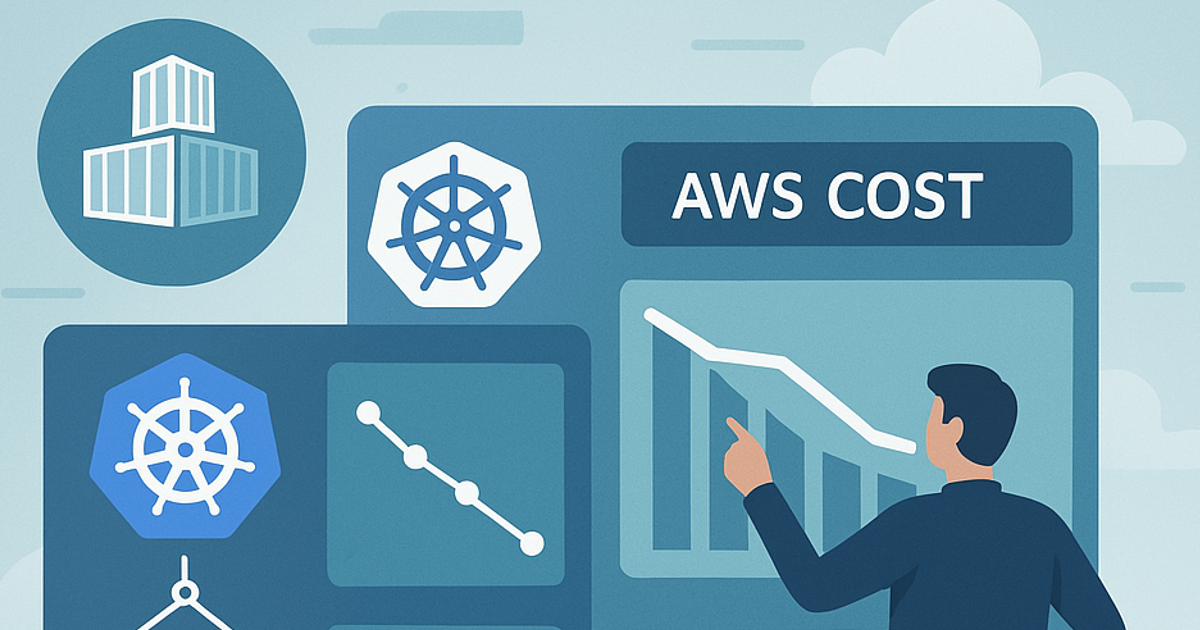
In today's cloud-first world, managing AWS costs has become a critical challenge for growing businesses. Container technologies like Kubernetes promise efficiency, but without proper management, they can lead to unexpected cloud bills. At Convox, we've helped hundreds of companies optimize their infrastructure spending while maintaining performance. Here are five practical ways to reduce your AWS costs through better container management.

One of the most common sources of wasted spend is over-provisioned infrastructure. Many teams default to using on-demand instances with excessive capacity "just in case."
Convox allows you to configure the node capacity type to be either "on_demand", "spot" or "mixed". The mixed setting creates one node group with on-demand instances and two others with spot instances, giving you both reliability and cost savings.
To implement this strategy:
$ convox rack params set node_capacity_type=mixed -r production
$ convox rack params set min_on_demand_count=2 -r production
$ convox rack params set max_on_demand_count=5 -r productionThis configuration ensures you always have 2-5 on-demand instances for critical workloads, while leveraging more cost-effective spot instances for everything else. For typical workloads, this can reduce infrastructure costs by 30-50%.

Many applications have predictable usage patterns. Development and testing environments often sit idle during evenings and weekends, while production workloads might have clear peak hours.
Convox's schedule_rack_scale_down and schedule_rack_scale_up parameters allow you to automatically scale your infrastructure based on cron expressions. For example:
# Scale down development environments at 8 PM on weekdays
$ convox rack params set schedule_rack_scale_down="0 20 * * 1-5" -r development
# Scale back up at 7 AM Monday-Friday
$ convox rack params set schedule_rack_scale_up="0 7 * * 1-5" -r developmentFor non-production environments, this approach can reduce costs by up to 70% by eliminating unnecessary runtime during off-hours.

Continuous integration processes can consume substantial resources, especially for larger applications. Rather than running builds on your production nodes, use Convox's additional_build_groups_config to create dedicated spot-based build infrastructure.
[
{
"type": "c5.large",
"capacity_type": "SPOT",
"min_size": 0,
"desired_size": 0,
"max_size": 3,
"label": "app-build",
"disk": 100
}
]Then configure your applications to use these dedicated build nodes:
$ convox apps params set BuildLabels=convox.io/label=app-build -a myappThis configuration ensures that:

AWS's Elastic File System (EFS) provides convenient persistent storage for containers but can become costly for high-throughput applications. Convox allows you to enable the EFS CSI driver and selectively attach volumes to services that truly need persistence:
services:
web:
volumeOptions:
- awsEfs:
id: "efs-1"
accessMode: ReadWriteMany
mountPath: "/data/"
- emptyDir:
id: "temp-vol"
mountPath: "/tmp/cache/"This hybrid approach uses:
By being selective about what data requires persistence, you can reduce EFS throughput charges while maintaining data durability where it matters.

Database costs often represent a significant portion of cloud spending. Convox's resource overlays allow you to use containerized resources in development environments while connecting to properly sized AWS managed services in production.
Define your database in convox.yml:
resources:
database:
type: postgresFor development environments, this runs as a containerized PostgreSQL instance. For production, override with an appropriately sized RDS instance:
$ convox env set DATABASE_URL=postgres://username:password@production-db.us-east-1.rds.amazonaws.com:5432/dbname -r productionThis strategy provides:
Using containerized databases in non-production environments can reduce database costs by 50-80% compared to running separate RDS instances for each environment.
Effective container management isn't just about technology—it's about matching resources to actual needs. Convox provides the tools to optimize your AWS infrastructure for both cost and performance without requiring deep Kubernetes expertise.
By implementing these five strategies, most organizations can reduce their AWS spending by 30-60% while maintaining or even improving application performance and reliability.
Ready to optimize your AWS costs? Get started free today or email us for a personalized assessment of your infrastructure spending.
